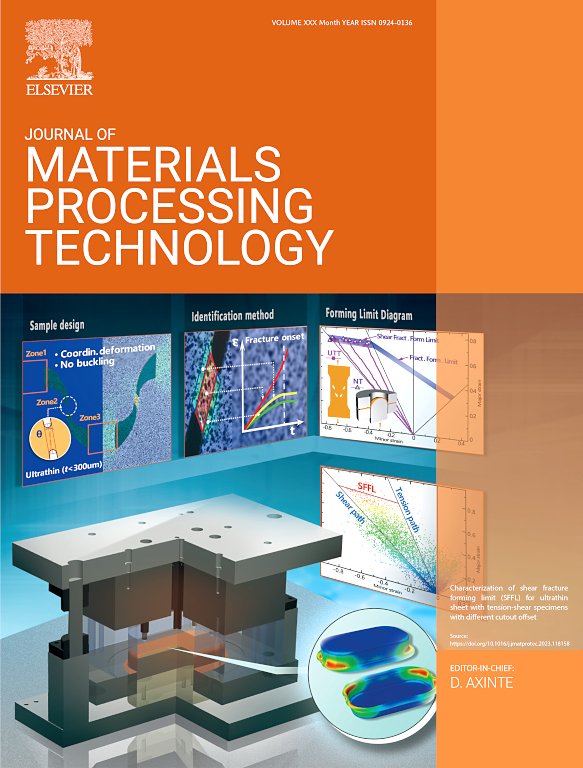气体金属弧焊制造的厚板钛合金热影响区的微观结构演变和脆化机理
IF 7.5
2区 材料科学
Q1 ENGINEERING, INDUSTRIAL
Journal of Materials Processing Technology
Pub Date : 2024-11-06
DOI:10.1016/j.jmatprotec.2024.118657
引用次数: 0
摘要
厚板钛合金的高效气体金属弧焊(GMAW)有助于大型钛合金结构件的应用和推广。然而,热影响区(HAZ)的严重脆化行为严重损害了其使用性能。本研究通过热机械模拟试验,系统分析了热影响区的微观结构演变和拉伸性能,并通过讨论位错滑移的阻力和动力,首次创新性地阐明了脆化机理。结果表明,当α相接近焊缝金属时,发生了 "αp+αs→αp+α'→鬼α+α'→α'+αGB "的转变。此外,由于晶格畸变更严重、高角度晶界(HAGBs)密度更高以及应变集中更密集,位错滑移阻力逐渐增大,而由于{0001}<112̅0>滑移系统的施密德因子(SF)降低,推动力逐渐减小。这导致近焊缝金属发生了最严重的脆化行为。目前的研究为大型钛合金结构件的焊接质量优化提供了宝贵的理论指导。本文章由计算机程序翻译,如有差异,请以英文原文为准。
The microstructure evolution and embrittlement mechanism in the heat-affected zone of thick-plate titanium alloys fabricated by gas metal arc welding
The efficient gas metal arc welding (GMAW) of thick-plate titanium alloys contributes to the application and promotion of large titanium alloy structural parts. However, the severe embrittlement behavior in the heat-affected zone (HAZ) seriously harms the service performance. In the current work, the microstructure evolution and tensile properties in HAZ are systematically analyzed by employing the thermal-mechanical simulation tests, and the embrittlement mechanism is innovatively elucidated for the first time by discussing the resistance and impetus to dislocation slip. The results showed that as it got closer to weld metal, the α phase underwent the transformation of “αp + αs→αp+α’→ghost α+α’→α’ + αGB”. Furthermore, the resistance to dislocation slip increased gradually due to the more severe lattice distortion, the higher density of high-angle grain boundaries (HAGBs), and the more intensive strain concentration, while the impetus decreased gradually due to the reduced Schmid factor (SF) of {0001}<110> slip system. These led to the most severe embrittlement behavior occurring at the near-weld metal. The current work provides a valuable theoretical guide for welding quality optimization of large titanium alloy structural parts.
求助全文
通过发布文献求助,成功后即可免费获取论文全文。
去求助
来源期刊

Journal of Materials Processing Technology
工程技术-材料科学:综合
CiteScore
12.60
自引率
4.80%
发文量
403
审稿时长
29 days
期刊介绍:
The Journal of Materials Processing Technology covers the processing techniques used in manufacturing components from metals and other materials. The journal aims to publish full research papers of original, significant and rigorous work and so to contribute to increased production efficiency and improved component performance.
Areas of interest to the journal include:
• Casting, forming and machining
• Additive processing and joining technologies
• The evolution of material properties under the specific conditions met in manufacturing processes
• Surface engineering when it relates specifically to a manufacturing process
• Design and behavior of equipment and tools.
 求助内容:
求助内容: 应助结果提醒方式:
应助结果提醒方式:


